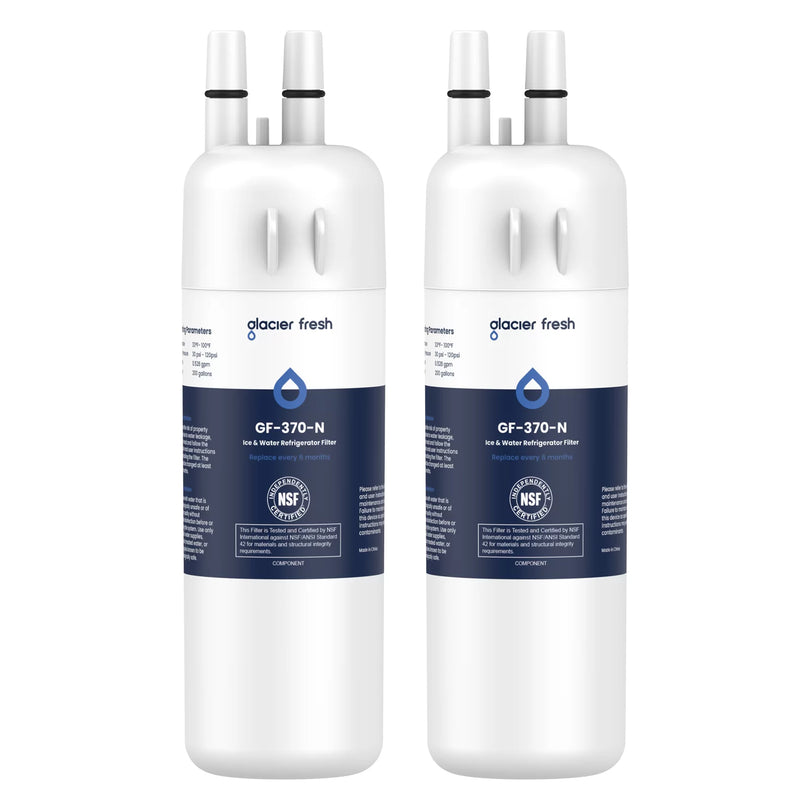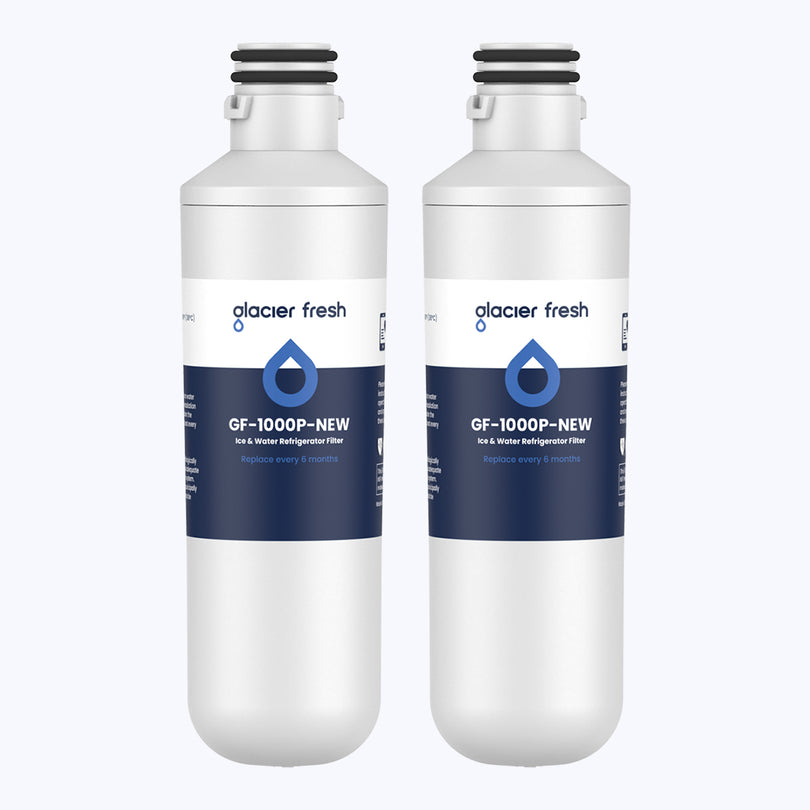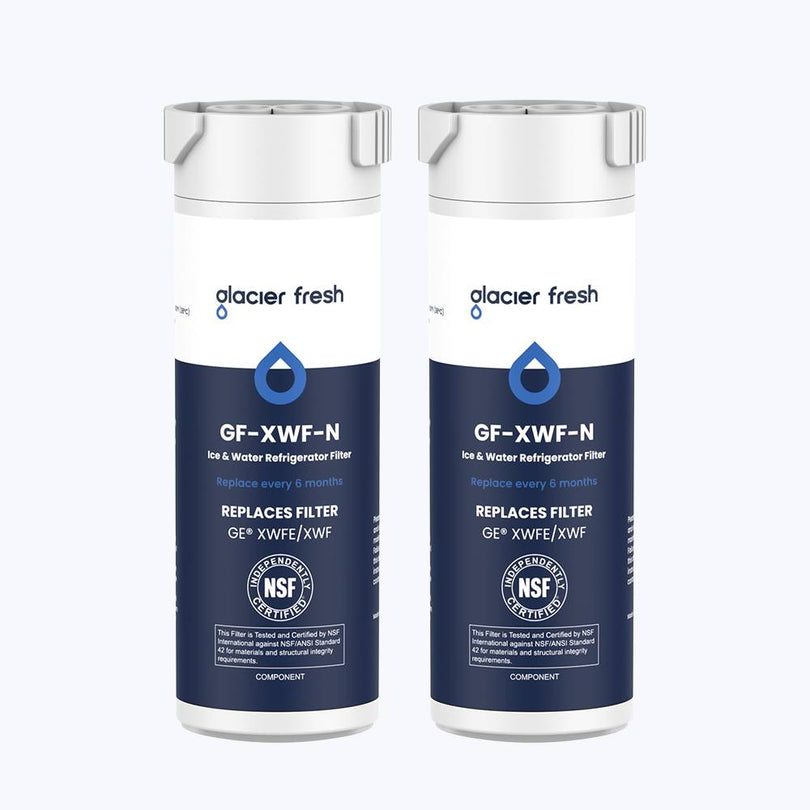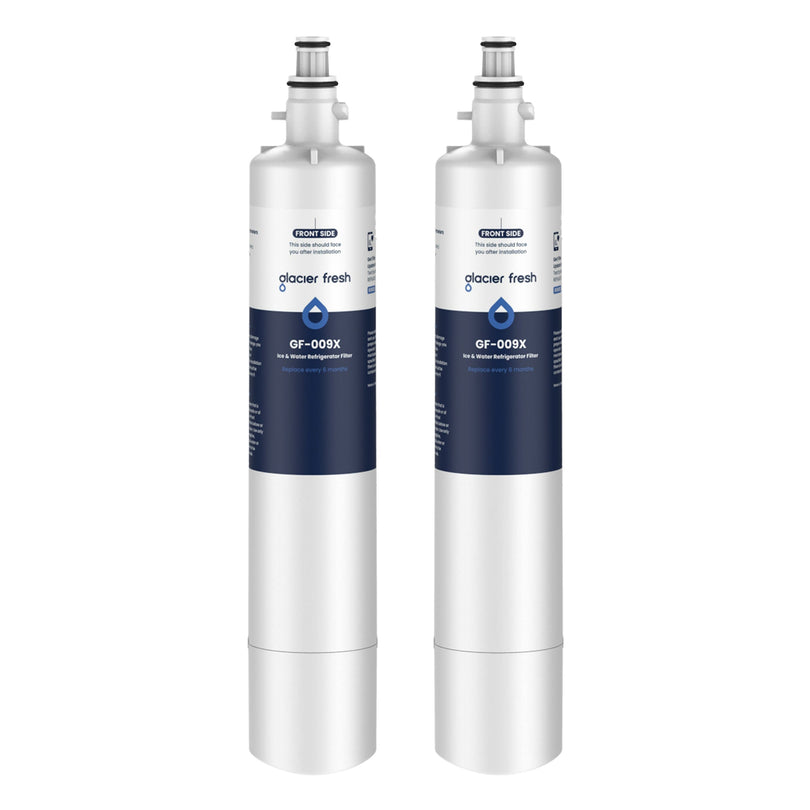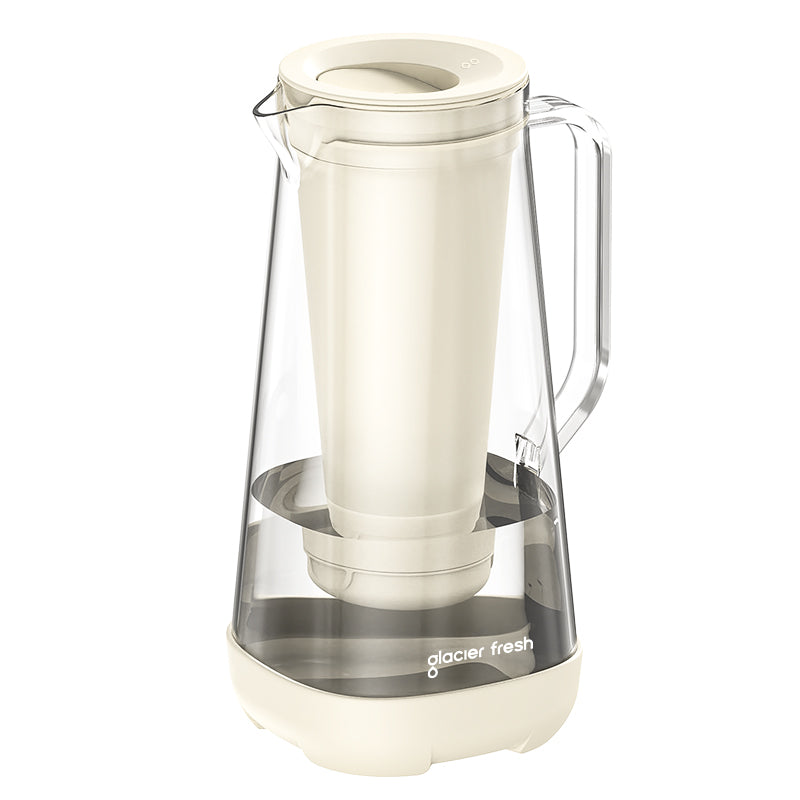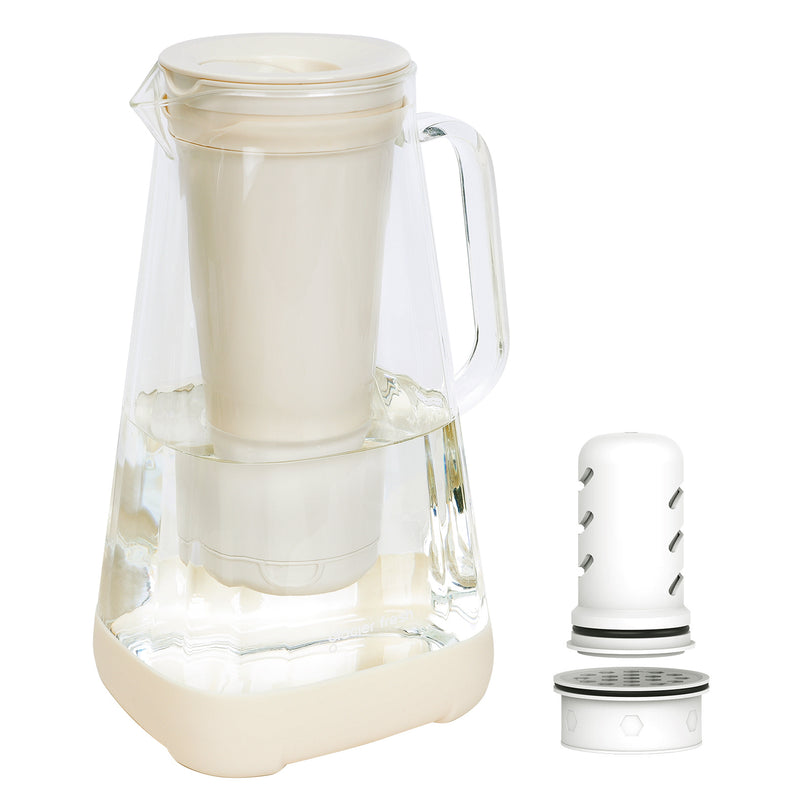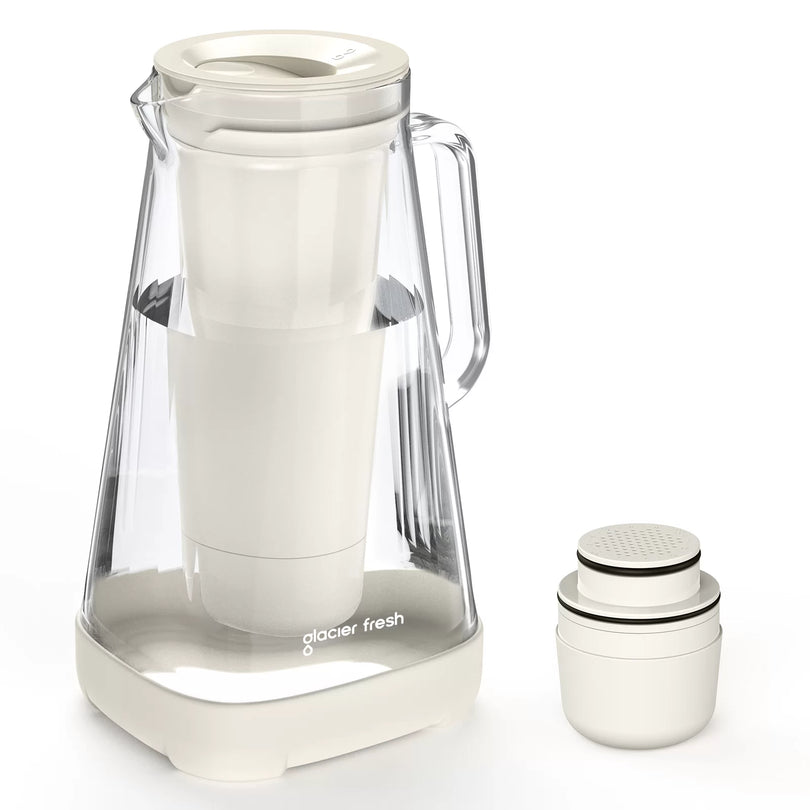Table of Contents:
Warum sollten Sie Ihren Kühlschrank-Wasserfilter wechseln?
Anzeichen dafür, dass Sie den Wasserfilter Ihres Beko-Kühlschranks wechseln müssen
Arten von Beko-Kühlschrank-Wasserfiltern
Schritte zum Wechseln des Beko-Kühlschrank-Wasserfilters
So wählen Sie einen Ersatzwasserfilter für Ihren Beko-Kühlschrank aus
Zusätzliche Tipps zur Wartung Ihres Beko-Kühlschrank-Wasserfilters
Abschluss
Haben Sie einen seltsamen Geruch oder Geschmack in Ihrem Wasser? Dann ist es vielleicht an der Zeit, Ihren Beko 4874960100 Wasserfilter auszutauschen. In diesem Artikel erklären wir Ihnen den Filterwechsel, damit Sie sauberes und frisches Trinkwasser haben. Entdecken Sie die Anzeichen für einen Filterwechsel, erfahren Sie mehr über verschiedene Filtertypen und erhalten Sie eine Schritt-für-Schritt-Anleitung zur Installation eines Ersatzfilters. Los geht's!
Warum sollten Sie Ihren Kühlschrank-Wasserfilter wechseln?
Um die Qualität und Sicherheit Ihres Trinkwassers zu gewährleisten, sollten Sie den Wasserfilter Ihres Kühlschranks austauschen. Ein Hauptgrund dafür ist die Bedeutung von sauberem und reinem Trinkwasser. Durch den Filterwechsel entfernen Sie effektiv Verunreinigungen wie Chlor , Sedimente und andere Schadstoffe aus Ihrem Leitungswasser. Dies verbessert nicht nur Geschmack und Geruch Ihres Trinkwassers, sondern stellt auch sicher, dass es unbedenklich ist.
Ein weiterer Vorteil des Wasserfilterwechsels ist die längere Lebensdauer Ihres Kühlschranks. Mit der Zeit können sich Verunreinigungen im Filter ansammeln und das Wassersystem des Kühlschranks belasten. Durch den regelmäßigen Filterwechsel können Sie diese Ablagerungen verhindern und die optimale Funktion Ihres Geräts aufrechterhalten.
Darüber hinaus ist der Wechsel des Wasserfilters eine kostengünstige Lösung. Auch wenn es wie eine zusätzliche Ausgabe erscheinen mag, ist es günstiger als der Kauf von Wasser in Flaschen. Indem Sie in einen hochwertigen Filter investieren und ihn wie empfohlen wechseln, können Sie langfristig Geld sparen.
Anzeichen dafür, dass Sie den Wasserfilter Ihres Beko-Kühlschranks wechseln müssen
Wenn das Wasser in Ihrem Beko-Kühlschrank einen seltsamen Geschmack oder Geruch hat, kann dies ein Zeichen dafür sein, dass Sie den Wasserfilter wechseln müssen. Der Wasserfilter in Ihrem Kühlschrank spielt eine entscheidende Rolle für die Qualität Ihres Trinkwassers. Mit der Zeit kann der Filter durch Verunreinigungen verstopfen, was seine Wirksamkeit bei der Entfernung von Verunreinigungen und die Verbesserung von Geschmack und Geruch Ihres Wassers beeinträchtigt. Um Ihnen zu helfen, zu erkennen, wann es Zeit für einen Filterwechsel ist, finden Sie hier einige häufige Anzeichen, auf die Sie achten sollten:
| Häufige Anzeichen | Filterlebensdauer | Wasserqualität |
| Seltsamer Geschmack oder Geruch | 6 Monate | Vorhandene Verunreinigungen |
| Reduzierter Wasserdurchfluss | 6 Monate | Trüb oder verfärbt |
| Eis schmeckt seltsam | 6 Monate | Chlorgeschmack |
Die meisten Ersatz-Wasserfilter von Beko 4874960100 haben eine Lebensdauer von etwa sechs Monaten. Diese kann jedoch je nach Nutzung und Wasserqualität variieren. Es wird empfohlen, den Filter mindestens alle sechs Monate auszutauschen, um sauberes und frisch schmeckendes Wasser zu erhalten. Befolgen Sie beim Filterwechsel die Anweisungen des Herstellers, um eine ordnungsgemäße Installation zu gewährleisten. Durch den regelmäßigen Filterwechsel genießen Sie sterileres und besser schmeckendes Wasser aus Ihrem Beko-Kühlschrank.
Arten von Beko-Kühlschrank-Wasserfiltern
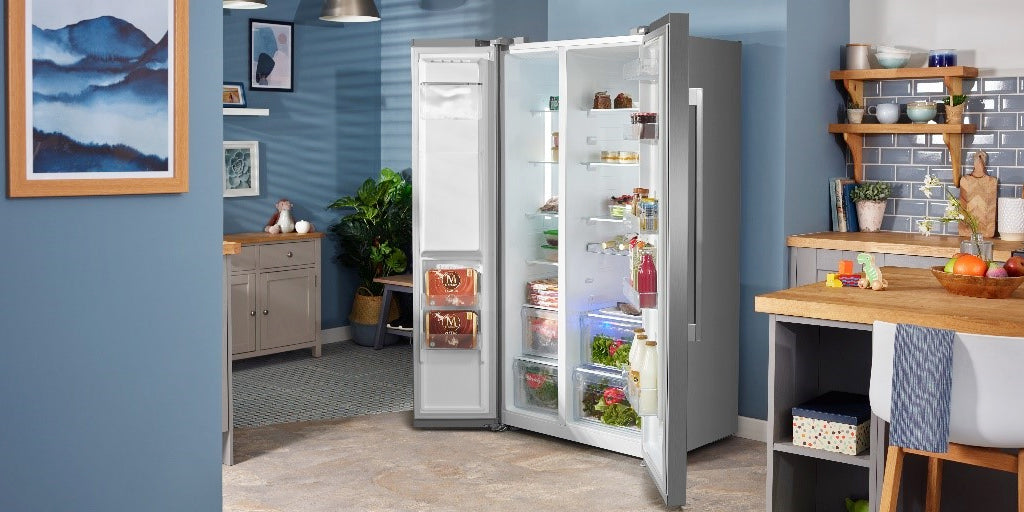
Lassen Sie uns nun über die verschiedenen verfügbaren Beko-Kühlschrank-Wasserfilter sprechen. Es stehen drei Haupttypen zur Auswahl:
Externe Wasserfilter
Externe Wasserfilter für Beko-Kühlschränke werden üblicherweise alle sechs Monate ausgetauscht. Diese Filter bieten zahlreiche Vorteile, wie z. B. die Verbesserung von Geschmack und Qualität des Trinkwassers und die Reduzierung von Verunreinigungen. Im Vergleich zu internen Filtern sind externe Filter im Allgemeinen einfacher zu installieren und zu warten. Um einen externen Wasserfilter an Ihrem Beko-Kühlschrank zu installieren, suchen Sie das Filtergehäuse (normalerweise an der Rückseite des Kühlschranks) und schließen Sie den Filter an die Wasserleitung an.
Bei häufigen Problemen mit externen Filtern, wie niedrigem Wasserdruck oder Leckagen, kann die Fehlerbehebung die Überprüfung der Wasserleitungsanschlüsse und den Austausch defekter Teile umfassen. Befolgen Sie zur Wartung und Reinigung Ihres externen Wasserfilters die Anweisungen des Herstellers und tauschen Sie die Filterkartusche regelmäßig aus, um eine optimale Leistung zu gewährleisten.
Interne Wasserfilter
Interne Wasserfilter bieten mehrere Vorteile für Ihren Kühlschrank. Sie sind in der Regel kompakter und platzsparender als externe Filter, sodass Sie die Lagerkapazität Ihres Kühlschranks maximieren können. Interne Filter sorgen außerdem für ein saubereres und ästhetisch ansprechenderes Erscheinungsbild, da sie im Kühlschrank versteckt sind.
Im Vergleich zu Außenfiltern sind Innenfilter in der Regel einfacher zu installieren und auszutauschen. Sie haben jedoch möglicherweise eine kürzere Lebensdauer und müssen häufiger ausgetauscht werden. Häufige Probleme mit Innenwasserfiltern sind Verstopfungen und ein verringerter Wasserdurchfluss. Befolgen Sie zur Reinigung und Wartung der Innenfilter die Anweisungen des Herstellers und tauschen Sie sie regelmäßig aus.
Eingebaute Wasserfilter
Eingebaute Wasserfilter bieten gegenüber externen Wasserfiltern mehrere Vorteile. Sie passen nahtlos in Ihren Kühlschrank und sparen so wertvollen Platz in Ihrer Küche. Darüber hinaus sorgen eingebaute Filter für eine kontinuierliche Versorgung mit sauberem und gefiltertem Wasser ohne zusätzliche Geräte. Wie bei jedem Gerät können jedoch auch bei eingebauten Wasserfiltern Probleme wie Verstopfungen oder Lecks auftreten. Um diese Probleme zu beheben, können Sie den Filter spülen oder auf lose Verbindungen prüfen.
Schritte zum Wechseln des Beko-Kühlschrank-Wasserfilters
Schritt 1: Suchen und schrauben Sie den alten Filter ab
Um den Wasserfilter des Beko-Kühlschranks auszutauschen, suchen Sie den alten Filter und schrauben Sie ihn ab. Befolgen Sie diese Schritte für einen reibungslosen Austausch:
- Trennen Sie zunächst die Wasserzufuhr zum Kühlschrank, um Lecks zu vermeiden.
- Suchen Sie das Filtergehäuse, das sich normalerweise im Kühlschrank oder auf der Rückseite befindet.
- Entfernen Sie vorsichtig alle Regale oder Fächer, die den Zugang zum Filter behindern könnten.
- Sobald Sie freie Sicht haben, identifizieren Sie den alten Filter und schrauben Sie ihn gegen den Uhrzeigersinn ab.
Der Filterwechsel ist ein wesentlicher Bestandteil der Filterwartung, um sauberes und frisches Wasser zu gewährleisten. Sollten während des Vorgangs Probleme wie Leckagen auftreten, kann die Lecksuche helfen, das Problem zu identifizieren. Sobald der alte Filter entfernt ist, können Sie den neuen Filter gemäß den Anweisungen des Herstellers installieren.
Schritt 2: Setzen Sie den neuen Filter ein und befestigen Sie ihn
Nachdem Sie den alten Filter abgeschraubt haben, können Sie nun den neuen Filter einsetzen und befestigen, um sauberes und frisches Wasser in Ihrem Beko-Kühlschrank zu gewährleisten.
Nehmen Sie zunächst den neuen Filter und richten Sie ihn an der Öffnung aus, aus der der alte Filter entfernt wurde. Achten Sie darauf, dass die Pfeile auf dem neuen Filter nach oben zeigen. Drücken Sie den Filter vorsichtig in die Öffnung, bis er fest sitzt. Drehen Sie den Filter anschließend im Uhrzeigersinn, bis er spürbar einrastet. Dieser Schritt ist entscheidend für die korrekte Installation des Filters und gewährleistet eine dichte Abdichtung. Überprüfen Sie noch einmal, ob der Filter sicher sitzt und bündig mit dem Gehäuse abschließt.
Schritt 3: Filterlicht zurücksetzen

Um die Filterleuchte nach dem Wechseln des Beko-Kühlschrankwasserfilters zurückzusetzen, müssen Sie diese einfachen Schritte befolgen:
- 1: Suchen Sie die Filteranzeigeleuchte auf dem Bedienfeld Ihres Beko-Kühlschranks.
- 2: Drücken Sie die Filter-Reset-Taste etwa 5 Sekunden lang, bis das Licht erlischt.
- 3: Lassen Sie die Taste los und prüfen Sie, ob die Filterleuchte erfolgreich zurückgesetzt wurde.
- 4: Wenn das Licht nicht erlischt, wiederholen Sie den Reset-Vorgang oder lesen Sie die Tipps zur Fehlerbehebung im Handbuch Ihres Kühlschranks.
Das Zurücksetzen der Filteranzeige ist ein wichtiger Schritt nach dem Filterwechsel, um eine genaue Überwachung der Filterlebensdauer zu gewährleisten. Mit diesen Schritten können Sie die Filteranzeige einfach zurücksetzen und weiterhin sauberes und frisches Wasser aus Ihrem Beko-Kühlschrank genießen.
Schritt 4: Auf Undichtigkeiten in den Schläuchen und Anschlüssen prüfen
Als Nächstes müssen Sie nach dem Wechsel des Wasserfilters die Schläuche und Anschlüsse Ihres Beko-Kühlschranks auf Undichtigkeiten prüfen. Dieser Schritt ist entscheidend, um die ordnungsgemäße Funktion Ihres Kühlschranks sicherzustellen und mögliche Wasserschäden in Ihrem Haus zu vermeiden.
Durch die Überprüfung der Anschlüsse und die Behebung von Lecks erhalten Sie die Effizienz Ihres Wasserfilters und verlängern seine Lebensdauer. Ziehen Sie dazu alle Anschlüsse fest und überprüfen Sie die Schläuche auf Anzeichen von Undichtigkeiten. Sollten Sie Lecks feststellen, ist es wichtig, diese sofort zu beheben. Dies kann durch das Festziehen der Anschlüsse oder den Austausch beschädigter Schläuche geschehen. Die regelmäßige Überprüfung der Anschlüsse und die Behebung von Lecks sind für die Wartung des Wasserfilters unerlässlich, um Ihren Beko-Kühlschrank in optimalem Zustand zu halten.
So wählen Sie einen Ersatzwasserfilter für Ihren Beko-Kühlschrank aus
Achten Sie bei der Auswahl eines Ersatzwasserfilters für Ihren Beko-Kühlschrank auf die Modellnummer und die Filterkompatibilität. So stellen Sie sicher, dass Sie einen Filter auswählen, der mit Ihrem Kühlschrankmodell kompatibel ist. Hier sind einige wichtige Faktoren, die Sie bei der Auswahl eines Ersatzwasserfilters beachten sollten:
- Kompatibilität der Modellnummer: Prüfen Sie vor dem Kauf eines Ersatzfilters, ob dieser mit Ihrem Beko-Kühlschrankmodell kompatibel ist. Diese Informationen finden Sie normalerweise in der Bedienungsanleitung des Kühlschranks oder auf der Website des Herstellers.
- Installation: Achten Sie auf einen Ersatzfilter, der sich einfach installieren lässt. Manche Filter benötigen Werkzeug oder professionelle Hilfe für die Installation, während andere nach einfachen Anweisungen leicht ausgetauscht werden können.
- Filterlebensdauer: Berücksichtigen Sie die Lebensdauer des Ersatzfilters. Die Lebensdauer verschiedener Filter variiert von drei bis sechs Monaten oder sogar länger. Wählen Sie einen Filter, der zum Wasserverbrauch und Budget Ihres Haushalts passt.
- Filtereffizienz: Achten Sie auf einen Ersatzfilter mit hoher Filtereffizienz. Dadurch wird sichergestellt, dass Schadstoffe und Verunreinigungen effektiv aus Ihrem Trinkwasser entfernt werden und sauberes und sicheres Wasser bereitgestellt wird.
Befolgen Sie die Anweisungen des Herstellers zum Austausch des Wasserfilters und wechseln Sie ihn regelmäßig, um die Effizienz aufrechtzuerhalten. Die richtige Wartung und der regelmäßige Filterwechsel tragen zur Langlebigkeit Ihres Beko-Kühlschranks und zur Qualität Ihres Trinkwassers bei.
Zusätzliche Tipps zur Wartung Ihres Beko-Kühlschrank-Wasserfilters

Pflegen Sie Ihren Beko-Wasserfilter regelmäßig, indem Sie ihn reinigen und auf Beschädigungen oder Verstopfungen prüfen. So stellen Sie sicher, dass Ihr Filter optimal funktioniert und Sie sauberes und sicheres Trinkwasser erhalten.
Um die Lebensdauer Ihres Wasserfilters zu maximieren und potenzielle Probleme zu vermeiden, befolgen Sie diese Tipps:
1. Reinigungstechniken: Reinigen Sie den Filter, indem Sie ihn vorsichtig unter fließendem Wasser abspülen oder in warmem Wasser mit mildem Spülmittel einweichen. Vermeiden Sie die Verwendung von Scheuermitteln oder Scheuerbürsten, da diese den Filter beschädigen können.
2. Filterwartungsplan: Erstellen Sie einen regelmäßigen Wartungsplan, der Sie daran erinnert, den Filter je nach Wasserverbrauch und -qualität alle ein bis drei Monate zu reinigen. So verhindern Sie die Ansammlung von Verunreinigungen, die die Filterleistung beeinträchtigen können.
3. Häufige Filterprobleme: Achten Sie auf häufige Probleme wie langsamen Wasserfluss, ungewöhnlichen Geschmack oder Geruch oder eine verminderte Wasserqualität . Diese können darauf hinweisen, dass der Filter gereinigt oder ausgetauscht werden muss.
4. Tipps zur Fehlerbehebung: Wenn bei Ihrem Wasserfilter Probleme auftreten, lesen Sie die Bedienungsanleitung oder wenden Sie sich an den Beko-Kundensupport, um Tipps und Anleitungen zur Fehlerbehebung zu erhalten.
Abschluss
Zusammenfassend lässt sich sagen, dass der Wechsel des Wasserfilters in Ihrem Beko-Kühlschrank eine wichtige Wartungsmaßnahme ist, die sauberes und frisches Trinkwasser gewährleistet. Durch den regelmäßigen Filterwechsel vermeiden Sie potenzielle Gesundheitsrisiken und genießen die bestmögliche Wasserqualität.
Achten Sie auf Anzeichen für einen notwendigen Filterwechsel und wählen Sie den passenden Ersatzfilter für Ihr Beko-Modell. So bleiben Kühlschrank und Wasserversorgung optimal in Schuss.

